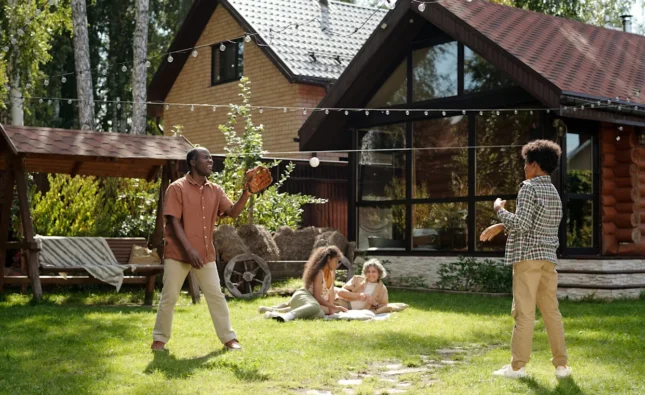In recent years, the concept of sustainability has become increasingly important in almost every aspect of our lives. From the food we eat to the way we travel, people are looking for ways to minimize their impact on the environment and create a more sustainable future.
One area where this trend is particularly evident is in home design. Sustainable home design principles not only reduce our carbon footprint but also create healthier and more comfortable living spaces. In this blog post, we’ll explore some key principles of sustainable home design and how they can be incorporated into modern homes.
1. Energy Efficiency
One of the fundamental principles of sustainable home design is energy efficiency. This involves minimizing energy consumption by using efficient appliances, insulation, and lighting.
To achieve energy efficiency, homes can be designed with features such as high-performance windows that prevent heat loss in the winter and keep the interior cool in the summer. Additionally, incorporating renewable energy sources such as solar panels can further reduce reliance on non-renewable energy sources.
2. Passive Design
Passive design is another crucial aspect of sustainable home design. This approach utilizes the natural elements of sunlight, shade, and ventilation to regulate temperature and lighting within the home.
Orientation plays a significant role in passive design, with homes ideally positioned to maximize sunlight exposure during the winter months while minimizing it during the summer. Features such as overhangs and shading devices can help control solar heat gain, while strategically placed windows and vents facilitate natural ventilation, reducing the need for mechanical cooling systems.
3. Sustainable Materials
Choosing sustainable materials is essential for reducing the environmental impact of home construction. This involves selecting materials that are renewable, recyclable, or have a low embodied energy.
For example, using reclaimed wood or bamboo flooring reduces the demand for new timber and promotes the reuse of existing resources. Similarly, opting for recycled steel or concrete can help minimize the environmental footprint of construction projects.
4. Water Conservation
Water conservation is another critical consideration in sustainable home design. By implementing water-saving fixtures and systems, homeowners can reduce both their water usage and their utility bills.
Low-flow faucets, toilets, and showerheads are effective at conserving water without sacrificing performance. Additionally, rainwater harvesting systems can collect and store rainwater for outdoor irrigation, reducing the need for potable water for landscaping purposes.
5. Indoor Air Quality
Indoor air quality is often overlooked but is crucial for creating a healthy living environment. Sustainable home design prioritizes the use of non-toxic materials and proper ventilation to minimize indoor air pollutants.
Materials such as low-VOC (volatile organic compound) paints and finishes, formaldehyde-free insulation, and natural flooring options contribute to better indoor air quality. Mechanical ventilation systems with high-efficiency filters further ensure that indoor air remains clean and fresh.
6. Durability and Longevity
Designing homes with durability and longevity in mind is essential for reducing waste and resource consumption over time. By selecting high-quality materials and construction techniques, homeowners can minimize the need for frequent repairs and renovations.
Investing in durable materials such as metal roofing, stone countertops, and durable siding can extend the lifespan of a home and reduce the environmental impact of maintenance and replacement.
In Conclusion
Sustainable home design principles present a comprehensive strategy for crafting residences that are environmentally conscious, energy-efficient, and conducive to comfortable living. By integrating components like energy efficiency, passive design, sustainable materials, water conservation, indoor air quality, and durability, homeowners can diminish their ecological impact while relishing the advantages of a healthier and more sustainable way of life.
As awareness of environmental concerns expands, the appeal of sustainable home design is rising among homeowners, architects, and builders alike. Home builders in Ogden can assist you in incorporating these principles into your home design and construction process. Embracing these principles and weaving them into home-building practices enables us to contribute to a more sustainable future for generations to come.






